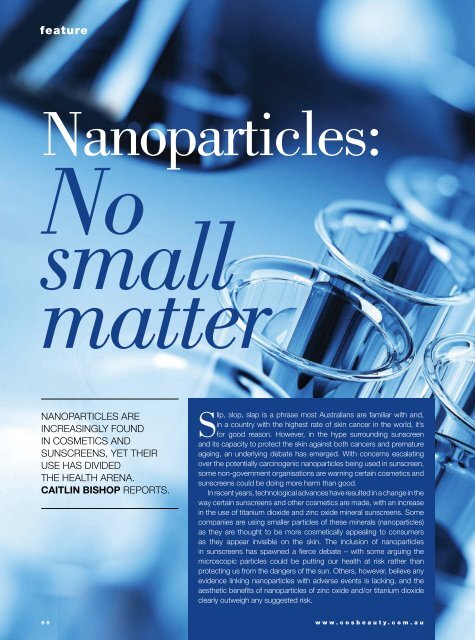Cosmetic Surgery and Beauty Magazine #66
Cosmetic Surgery and Beauty is the must-read for anyone considering a cosmetic procedure or treatment. With hundreds of before and after photo, and cosmetic and plastic surgery experts featured, tis educational resource will allow you to confidently decide the best course of action. This issue includes features on: Breast reshaping Six ways to get younger looking skin Surgical vs non-surgical fat reduction Body soothing products Energy boosters DIY perfect makeup As well as regular features on breast augmentation, facelifting, rhinoplasty and liposculpture/liposuction.
Cosmetic Surgery and Beauty is the must-read for anyone considering a cosmetic procedure or treatment. With hundreds of before and after photo, and cosmetic and plastic surgery experts featured, tis educational resource will allow you to confidently decide the best course of action.
This issue includes features on:
Breast reshaping
Six ways to get younger looking skin
Surgical vs non-surgical fat reduction
Body soothing products
Energy boosters
DIY perfect makeup
As well as regular features on breast augmentation, facelifting, rhinoplasty and liposculpture/liposuction.
You also want an ePaper? Increase the reach of your titles
YUMPU automatically turns print PDFs into web optimized ePapers that Google loves.
feature<br />
Nanoparticles:<br />
No<br />
small<br />
matter<br />
Nanoparticles are<br />
increasingly found<br />
in cosmetics <strong>and</strong><br />
sunscreens, yet their<br />
use has divided<br />
the health arena.<br />
Caitlin Bishop reports.<br />
Slip, slop, slap is a phrase most Australians are familiar with <strong>and</strong>,<br />
in a country with the highest rate of skin cancer in the world, it’s<br />
for good reason. However, in the hype surrounding sunscreen<br />
<strong>and</strong> its capacity to protect the skin against both cancers <strong>and</strong> premature<br />
ageing, an underlying debate has emerged. With concerns escalating<br />
over the potentially carcinogenic nanoparticles being used in sunscreen,<br />
some non-government organisations are warning certain cosmetics <strong>and</strong><br />
sunscreens could be doing more harm than good.<br />
In recent years, technological advances have resulted in a change in the<br />
way certain sunscreens <strong>and</strong> other cosmetics are made, with an increase<br />
in the use of titanium dioxide <strong>and</strong> zinc oxide mineral sunscreens. Some<br />
companies are using smaller particles of these minerals (nanoparticles)<br />
as they are thought to be more cosmetically appealing to consumers<br />
as they appear invisible on the skin. The inclusion of nanoparticles<br />
in sunscreens has spawned a fierce debate – with some arguing the<br />
microscopic particles could be putting our health at risk rather than<br />
protecting us from the dangers of the sun. Others, however, believe any<br />
evidence linking nanoparticles with adverse events is lacking, <strong>and</strong> the<br />
aesthetic benefits of nanoparticles of zinc oxide <strong>and</strong>/or titanium dioxide<br />
clearly outweigh any suggested risk.<br />
90 www.cosbeauty.com.au

















